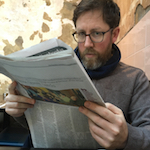5 top tips for getting collaboration right

No project team is an island. As a project professional, you will often find yourself having to collaborate with other project teams, as well as other operational departments in your organisation. But working together isn’t always easy.
Here are five tips to help those joint efforts run smoothly.
1. Approach it consciously
Teams should meet to discuss how they are going to work together and the behaviours that are to be encouraged. Ask people to share examples of good and bad collaboration they’ve experienced, thus helping to ensure that the teams, which may each have a different working culture, are coming from the same starting point.
“Good collaboration doesn’t happen by accident,” says Susanne Madsen, author of The Power of Project Leadership. “It happens by design.”
Madsen even suggests getting these expectations in writing. She’s a keen advocate of the team charter, a written document that details the purpose and scope of the collaboration, the roles and responsibilities, and how each person is contributing to the stated goals.
The charter should be created in collaboration, and it should then be revisited and refined. “Go back every six to eight weeks and see whether you’re working the way you said you would,” says Madsen.
2. Expect things to go wrong
What are you going to do when conflict arises? And how will people react if somebody doesn't show up to meetings or fails to pull their weight?
Whatever the response, it must be constructive and can’t be allowed to derail the project. This takes work, learning to navigate through conflict, rather than shying away from it. It also needs people to show a degree of emotional intelligence — not immediately flying off the handle, but having the self-awareness to control their response.
3. Set up effective channels
In collaboration, it’s the quality of the communication that matters. Research conducted for Google’s Project Aristotle found that high-performing collaborations involved a lot of face-to-face communication and video calls.
Emails and texts were found to be less effective, as were video calls that involved more people. Video calls are now a fixture of projects, so encourage the use of cameras and breakout rooms, and try to schedule face-to-face meetings where possible too.
4. Know who’s in the room
Heidi Gardner, a Harvard University professor and author of the book Smart Collaboration, has conducted extensive research into how personality types affect the quality of collaboration.
Appearing on an episode of the Supercreativity podcast entitled ‘The Power of Smart Collaboration’, she gave the example of complex thinkers, those who “love to theorise and abstract and make all of these connections across unusual things”, explaining how they may clash with concrete thinkers, who may fixate on the practicalities of rolling things out.
“There’s a risk that they simply get on each other’s nerves,” says Gardner. “But a complex thinker can instead say: ‘Thank goodness that concrete, more mundane thinker is in the room, because they’ll make sure this conversation gets translated into action’.”
The key is to make sure everyone knows what types they’re working with, and what that means for working together.
5. Be vulnerable
Performance improves when everyone on the team is actively contributing to decision-making. This requires what Dr Amy Edmondson, Professor of Leadership and Management at Harvard University, calls psychological safety: “A belief that no one will be punished or humiliated for speaking up with ideas, questions, concerns, or mistakes, and that the team is safe for interpersonal risk-taking.”
To create such an encouraging space, project leaders need to express their own vulnerability.
“Frame the work as a learning problem, not an execution problem,” Edmonson said in a talk on the subject. “Make explicit that there’s enormous uncertainty ahead, and enormous interdependence… Acknowledge your own fallibility. Say simple things like: ‘I may miss something, and I need to hear from you.’ That creates more safety for speaking up. And model curiosity by asking a lot of questions.”
You may also be interested in:
- The power of collaboration: managing complex decisions and risks in project environments
- How to build team collaboration and become a project leader everyone loves
- What is project team management and leadership?


0 comments
Log in to post a comment, or create an account if you don't have one already.